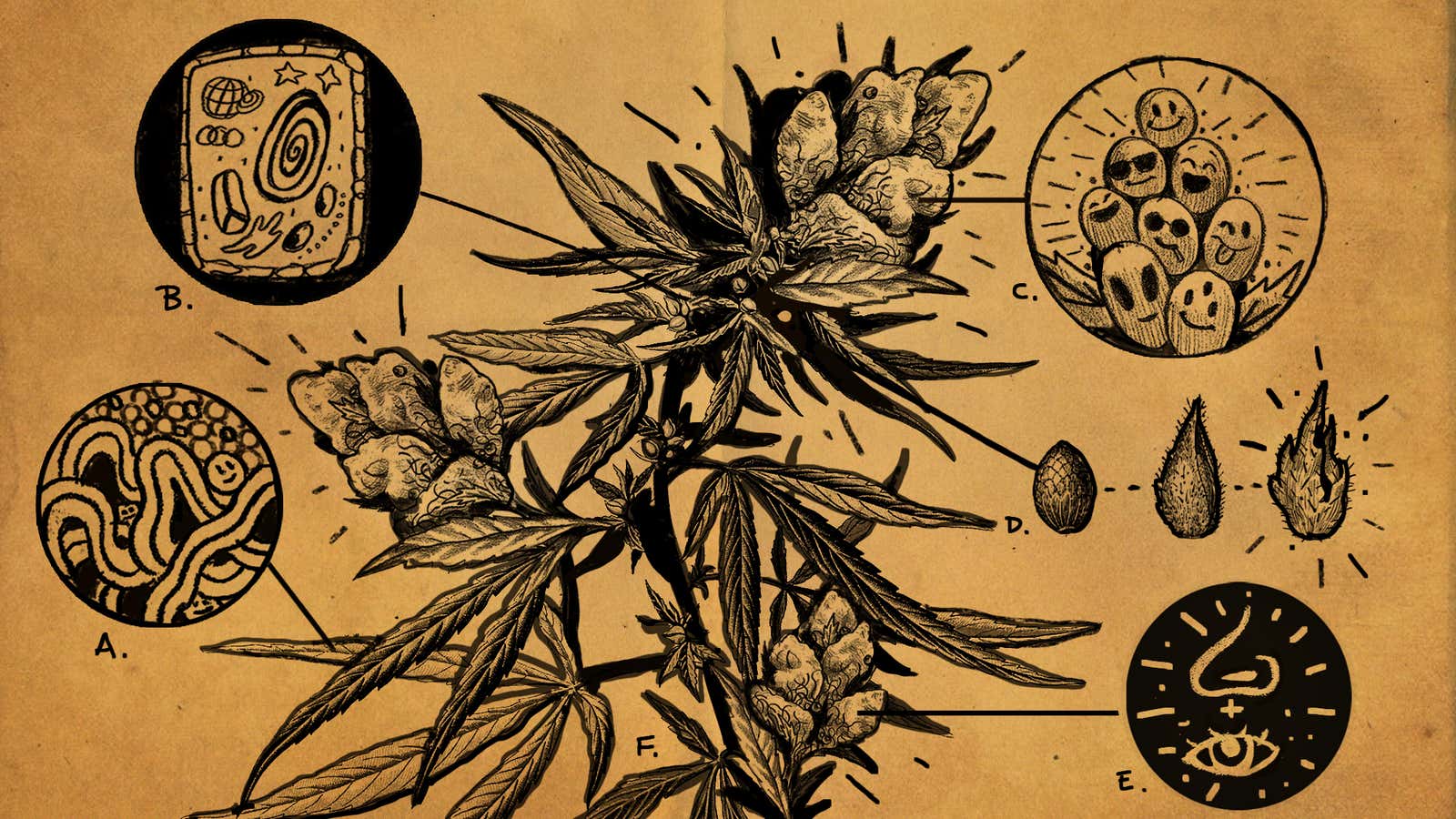Those pushing for nationwide cannabis legalization hope to see the industry become a fully realized and regulated marketplace, as opposed to the patchwork of more or less restrictive local regulations and a whole lot of old weed in Mylar bags that some find it today.
If you don’t live in a weed-growing region, or one where it’s safe to grow your own, finding the best and freshest bud can be an adventure that never ends. Even if you do, and you rely on legal shops, quality and price don’t always match up. To give you the tools and know-how you need to have a good experience before you walk into a store, why we asked some cannabis heavy hitters for their tips and tricks for sorting good weed from bad.
A weed columnist’s POV: Look at the harvest date
Writing about weed isn’t all testing strains and checking out grows— you have to tell the truth, which, in a tight-knit industry, can change fortunes in a moment. Emerald Cup judge and columnist Jimi Devine is known for being a literal “heat seeker”—heat being a code word for excellent cannabis, having spent years building trust in the industry, covering policy and working hands-on in a dispensary.
“Real hyper-elite cannabis, most of us won’t have the opportunity to be exposed to in life,” Devine wrote in an email. “The sweet spot for great pot is getting off shelves in about 60 days. It’s hard to be ‘the heat’ after that in most commercial settings.”
His advice for consumers is to consider the harvest date. For those who want heat but have lukewarm purchasing power, Devine suggests opting for “lights deps,” which is outdoor cannabis that is deprived of the light that triggers the flowering process, rather than allowed to flower on its own, a process that produces higher quality weed at a lower price point.
The color and smell tests
Someone at the dispensary is choosing what goes onto the shelves, but who is choosing what comes off the field and goes into the bag? That’s the job of a procurement specialist, making them the perfect people to ask about buying the good good.
Former weed and organic veggie cultivator Rachel Smith has been doing big things in the branded cannabis space, and her last gig involved picking (and marketing) for a top-20 California canna brand.
The major difference between consumer purchasing vs. a buyer doing it at scale for a job? The stakes—yet according to Smith, the experiences are intimately connected. “One feeds the other,” she said. “Internal quality control is hugely important in creating consistency for the consumer. My main goal when creating a product line is to package and sell a consistent product at a fair price. One sub-par experience will drive a customer to a competitor product.”
When choosing product for a client, Smith knows what to look for. “First and most importantly, cannabis flowers must pass the smell test,” she said. “Buds should be pungent and fresh without [you]having to squeeze or grind [them] to release aromatic terpenes. If there’s a great nose, then I go forward with a visual inspection. The buds should be bright in color and have a dense concentration of trichomes. Nugs should be nicely manicured, devoid of excess leaf and stem.”
Look for signs of mold, mildew, and other indicators of subpar or unsafe product. “Buds [should] not contain seeds or male flowers, which will affect cannabinoid potencies and can be indicative of other problems with the cultivation practices used,” she said.
Before getting parked on shelves, the buds still need to go through a lab test where they’re checked for cannabinoid and terpene content, as well as for any pesticides or microbes. These are all things you can’t see, but can greatly impact your experience—which is why buying from shops is the best way to avoid unsafe weed additives.
Smith said when in doubt, ask a budtender. “Brands that pride themselves on quality usually make sure that retail employees have a chance to sample their product so they can speak to its value,” she said. “Budtenders also hear customer feedback and can gauge repeat purchases. Choose a retailer with a competent, knowledgeable staff that can help guide you to purchases you won’t regret.”
The best weed sometimes comes in basic packaging
John Kaye is co-founder of canna company of Burb, which sells to buyers in Canada, where the nationwide market is quite a bit different from the United States’ patchwork one.
“In Canada there’s no package marketing, so the only thing that matters is the flower quality,” Kaye wrote in an email. “In a sense, brands are all on a level playing field because of the restrictions, and the flower quality is what provides sell-through. No flash, no gimmicks.”
This means that a cool design is simply not part of the game up north. “Producers in Canada also grow under massive federal requirements, so what you get is an industry that has some of the cleanest, nicest flower, which is tested through highly controlled labs,” he added.
With Canada among the only federally legal cannabis markets in the world, Kaye said, “there’s a silver lining in Canada for consumers: They are getting clean, craft, flower from producers and brands that have figured it out.”
Once the U.S. government gets it together, hopefully brands will follow suit. Robust cannabis markets help consumers get the best product and the best prices, so do what you can to voice your support for local regulatory changes if you want to see heat in your state’s retail cannabis outlets.

